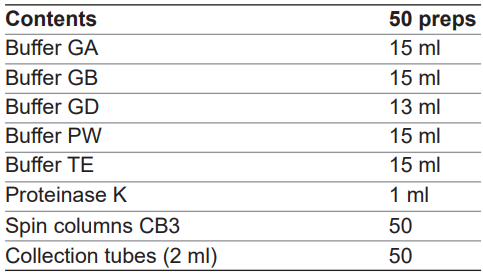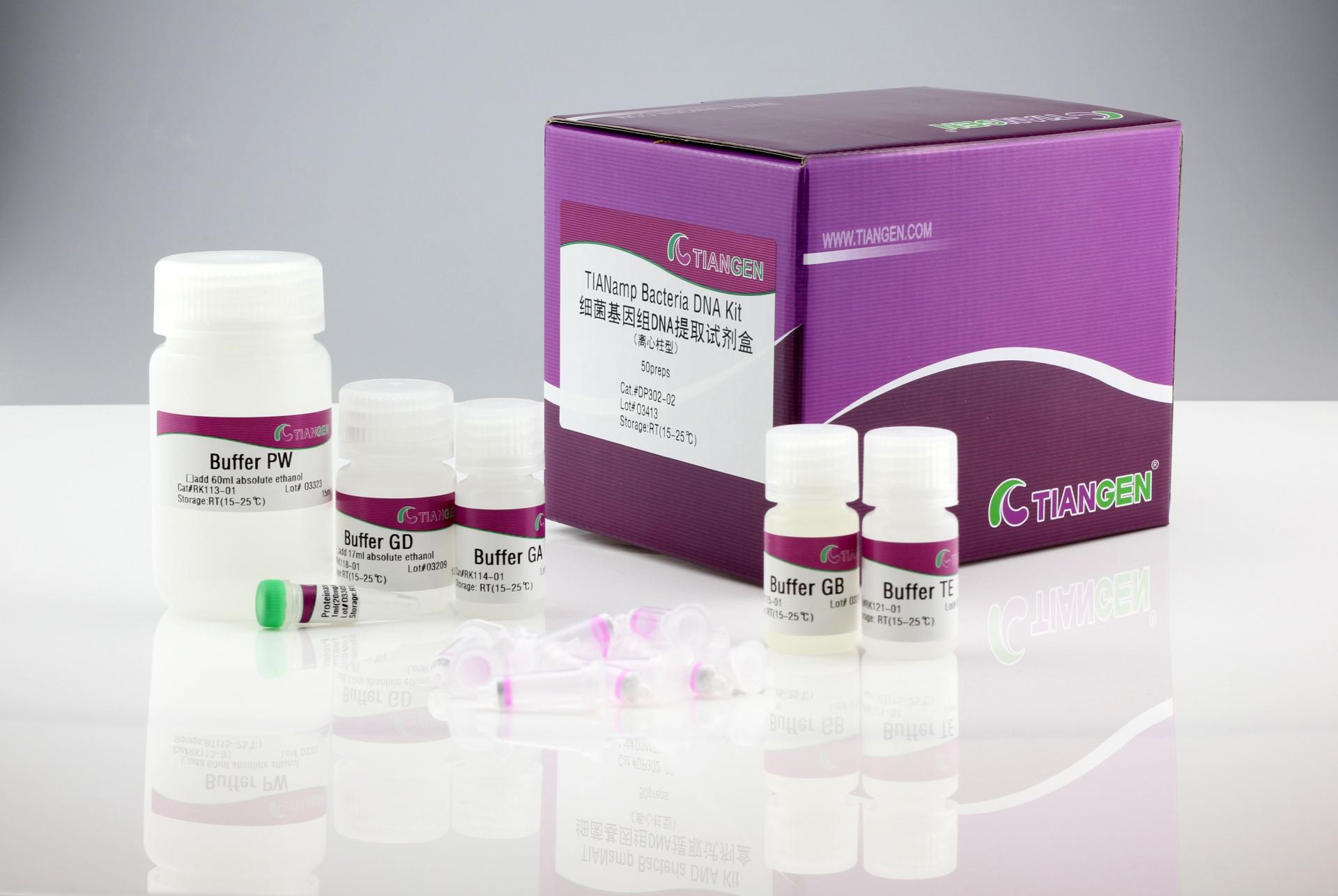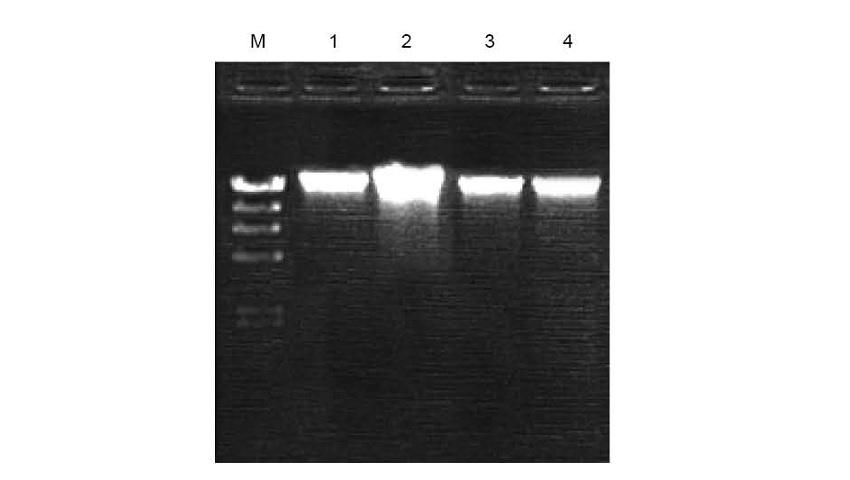Catalog Number|Packaging
Mat. No |
Ref. No |
No. of preps |
|
4992448 |
GDP302-02 | 50 |
-
Features
● Simple and fast: High purity genomic DNA of Gram-negative bacteria can be obtained within 1 hour.
● Excellent quality: The purifed DNA can be directly used in downstream molecular experiments such as PCR, restriction endonuclease digestion, Southern blotting, etc.
-
Description
The TIANamp Bacteria DNA Kit adopts a highly efficient, DNA-specific adsorption spin column and a unique bufer system for both genomic DNA extraction from Gram-negative and Gram-positive bacteria. The kit can also be used for the extraction of pathogenic bacteria (microorganisms) of food, such as Staphylococcus aureus, cholera sclerotia, hemorrhagic Escherichia coli O157:H7, Listeria monocytogenes, Salmonella, Enterobacter sakazakii, etc. 10-40 μl of pure genomic DNA can be rapidly extracted and purifed from 1-5 ml of bacterial culture medium, and the obtained genomic DNA can be directly used in molecular biology experiments such as PCR template, restriction enzyme digestion and Southern blot.
-
Kit Contents

-
Applications
● Genome extraction of Gram-negative bacteria.
● Genome extraction of Gram-positive bacteria.
● Genome extraction of pathogenic bacteria in food.
-
Required Reagents
Lysozyme (Gram-positive bacteria), ethanol, lysozyme buffer (20 mM Tris, pH8.0; 2 mM Na2-EDTA, 1.2% Triton-100). -
Yield For Reference

Note: The DNA extraction amount may vary depending on the bacteria types and culture time, etc. Gram-positive bacteria require special treatments such as lysozyme for lysing, and the genomic DNA extraction can be performed according to the procedures of Gram-negative bacteria.
-
Storage Condition
TIANamp Bacteria DNA Kit should be kept in dry place and can be stored at room temperature (15-30°C) for up to 15 months without showing any reduction in performance and quality. If any precipitate forms in the buffers, it should be dissolved by warming the buffers at 37°C for 10 min before use. -
Important Notes
● Repeated freezing and thawing of stored samples should be avoided, since this leads to DNA size reduction.
● If precipitates formed in Buffer GA or Buffer GB, warm the buffer to 37°C until the precipitates have fully dissolved.
● All centrifugation steps should be carried out in a conventional table-top centrifuge at room temperature (15-30°C).
Experimental Example
Extraction of bacterial genomic DNA from various sources using TIANamp Bacteria DNA Kit.
Starting amount: 1 ml of overnight bacteria culture medium. Elution volume: 100 μl. Loading volume: 3 μl. The concentration of the agarose gel was 2%. The electrophoresis was performed under 6V/cm for 20 min.
M: λDNA/Hind III Marker;
1.λDNA;
2: E.coli;
3: Staphylococcus epidermidis;
4: Staphylococcus aureus.
-
Sort by
-
Date
Date(
)
Date
Date(
)
Impact Factor
IF(
)
Impact Factor
IF(
)




 Inquire
Inquire


